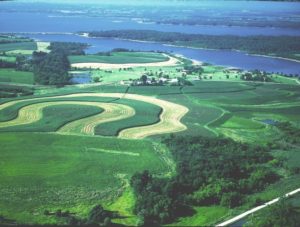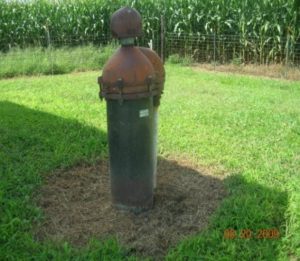We have much more to do and your continued support is needed now more than ever.
Water Quality Problems in America’s Heartland
Before Flint, many people did not think twice about the safety of their drinking water. However, the Flint crisis has focused attention on old contaminated pipes rather than the source of the water. While aging infrastructure is a concern for some communities, a much more prevalent problem is nutrient contaminated drinking water.

The city of Des Moines Iowa is struggling with treating nitrate pollution from extensive upstream farming. In 2015, the city’s water utility, Des Moines Water Works, spent $1.5 million removing and treating nitrates.
If nitrate levels continue to grow, Water Works will have to do costly facility upgrades. As a result the facility is pursuing legal action against three rural counties that have drainage districts with high nitrate concentrations. Water Works would like to see farmers held accountable for the pollution running off their fields to improve the quality of Des Moines’ source water.
Source water is any water from lakes, rivers, streams or underground aquifers that is used for drinking. Protecting source water is the key to safe, cost effective drinking water. Small, rural water utilities often are the most susceptible to drinking water contamination, because they have fewer resources at their disposal while being confronted with surrounding farmland and associated fertilizer runoff.

Cover crops are a great tool to reduce nitrate runoff, in river basins with large swathes of cultivated crop land where nitrates are a concern. Research has found that while sewage effluent can have small local impact, fertilized cropland (specifically corn) is the dominate source of nitrates.
The National Wildlife Federation is working to engage rural water utilities in sustainable agriculture efforts to address the problem while improving farmers’ bottom lines. This will benefit local communities and wildlife living in and around these areas.
NWF hosted a webinar in early April featuring presentations from the National Resources Conservation Service, the Missouri Rural Water Association and Iowa Dept. Of Natural Resources. One highlight of the webinar was a case study about the City of Griswold Iowa water utility.

Jeff Metheney, City of Griswold Water Operator, explained how Griswold worked with farmers to plant 300 acres of cover crops in key groundwater recharge areas to filter out pollutants. Without the participation of the area landowners, this project would not have been successful in removing pollutants through the low cost method of planting cover crops. Jeff noted that there has been a small decline in nitrates, and he anticipates a larger decrease in the future.
The story of Griswold is a great example of how utilities can work with the local community to improve water quality at a fraction of the cost compared to traditional treatment methods. One facility estimates using cover crops would cost 90% less than continuing with the customary approach.
Learn more about NWF’s efforts and how to get involved by contacting me (lillarde@nwf.org) and checking out the archived webinar.





















